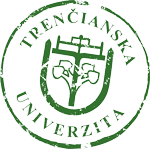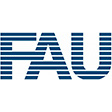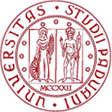APVV (Research and Development Support Agency)
Acronym: HATCOT
Dates: 2023- 2027
Abstract: Thermal barrier coatings (TBCs) are currently used to provide thermal insulation against hot gasses in advanced gas turbines and diesel engines in order to improve their performance and efficiency of these machines. TBC coatings typically consist of a creep-resistant, high strength Ni-based superalloy as a substrate, an oxidation resistant bond coat (BC), and a ceramic topcoat (TC) of Yttria-stabilized zirconia (YSZ). Nowadays, fluorite oxides have been proposed as a new TBC coating with a lower thermal conductivity and a higher thermal expansion coefficient compared to conventional coating. However, its thermal expansion undergoes a sudden decrease in the range of 200–400 ˚C and it has poor mechanical properties resulting in short thermal cycling lifetime in the case of this new coating. To solve mentioned problem and increase TBCs efficiency and life span, in this work, high entropy fluorite oxide as a new kind of material will be introduced as a new TBC to enhance the thermal and mechanical properties of conventional ones. The concept of the new category materials high entropy ceramics (HECs) has been proposed several years ago, which is directly borrowed from high entropy alloys (HEAs). High-entropy ceramics is an emerging class of high-entropy materials with higher properties in comparison with conventional ones. It leads to new materials, both as bulk and films, play important roles in technology in the decades to come. This work will focus on the processing and characterization of high-entropy powder ceramics, it means, the composition design, structure, chemistry, composite processing of powder, and evolution of microstructure and properties will be investigated. In the second stage, the bulk samples will be synthesized by spark plasma sintering or hot-pressing method to produce high entropy bulk ceramics. Then, all the samples will be characterized. The optimized sample with the higher properties will be granulated to use for thermal barrier application.
Acronym: RADLON
Coordinator / Partner institution: VÚEZ, a.s. / Slovak Academy of Sciences, Institute of Inorganic Chemistry
Dates: 2023- 2027
Abstract: The aim of the Project is to extend the methodology of verifying the functional capability of emergency core cooling systems in case of loss-of-coolant accidents as well as that of cooling systems intended for severe accidents from the standpoint of impacts of long-term exposure of thermal insulation to radiation at elevated temperatures and in such a way to actively contribute to increasing the operating safety of nuclear power plants. Within the Project, samples of thermal insulation exposed to accelerated heat and radiation ageing will be investigated. The radiation doses are anticipated to be at the level of a 40-year operation at a dose rate of 10 Gy/h on the primary circuit of a WWER 440 V213 type NPP. Samples treated in such a way will be investigated from the standpoint of changes in their physico-mechanical properties as well as from the standpoint of their chemical resistance to corrosive effects of emergency reactor coolant. However, preparation of the samples by accelerated heat and radiation ageing i s extremely both time-consuming and costly. For instance, to obtain a sufficient radiation dose at a level simulating a 40-year operation (approximately 3500 kGy), irradiation period is needed equal to approximately 1650 h of net irradiation time with an average irradiation dose rate of 2 kGy/h. Irradiation is to be performed at an elevated temperature of 300°C which means that it will have to be performed in a thermal box. That is why it is necessary to develop a procedure for simulation of irradiation effects in order to obtain a sufficient number of samples for integrated testing. A feasible solution seems to be thermo-mechanical loading of the samples since, based on the knowledge obtained so far, thermal insulation fibres under the effect of irradiation at elevated temperature lose their mechanical elasticity and become brittle. In addition, their chemical resistance to corrosion effects of the coolant solution changes.
Acronym: FGLAS
Coordinator: Dr. Dagmar Galusková
Dates: 2023- 2027
Abstract:Proper and detailed fundamental characterization of materials to address their physicochemical properties is inevitable in research studies and the implementation of environmentally friendly technologies. Usable materials include strategic raw materials, which are the basis of new technologies and energy resources. The determination of the precise elemental composition, as well as the detection of possible contaminants, is an integral part of the mineral exploration, prospecting, processing, and industrial use of these raw materials. Chemical analysis requires a suitable analytical method and its proper use. One of the methods that is growing in popularity for the analysis of geological samples is the method of laser ablation with inductively coupled plasma mass spectrometry (LA-ICP-MS). It allows direct analysis of solid material without prior decomposition and enables to characterize the sample not only in terms of its bulk composition but also in terms of microstructure, individual mineral grains, zoning, migration of elements, etc. For proper use of this method, a suitable calibration standard is needed with the analyte contents as close as possible to the sample analyzed. The market for commercially available calibration standards is very limited, so in many cases, the situation is solved by the preparation of calibration materials in the laboratory. For the standard to meet the conditions necessary for LA-ICP-MS and professional approach and knowledge are required. The project will cover development and preparation of reference materials applicable for laser ablation ICP-MS analysis covering a wide concentration range of elements detected in most important strategic raw.
Acronym: SCREWER
Coordinator: Dr. Si Chen
Dates: 2023- 2027
Abstract: Yearly number of patients worldwide with osteonecrosis and bone defects caused by disease and accidental injury require a scaffold implant to help regenerate the affected bone. Bioactive glass is an excellent bone repair material applied in clinical practice. Despite its remarkable features, it is mainly used in the free powder form or as a filler in dental applications. The proposed project aims to fabricate hierarchical porous bioactive glass scaffolds mimicking natural bone for bone regeneration. In this respect, we will focus on mimicking the cancellous and cortical bone into one implant. The combination of micron-pore bioactive glass microspheres, bioactive nanoparticles and 3D additive manufacturing, is expected to construct hierarchical porous scaffolds with highly interconnected millimetre and sub-millimetre pores (300-1600 μm) and oriented micron pores (1-100 μm) as well as nanopores. The chemical compositions of the bioactive glasses, a ratio of microspheres/nanoparticles, the topology of the pore system, and sintering conditions will be investigated with aim of obtaining required mechanical properties, higher efficiency of angiogenesis, osteogenesis and cellular infiltration. Microspheres/nanoparticles are going to be modified by therapeutic ions e.g. boron, cobalt, zinc, cerium and copper, with a focus on biological functions promoting angiogenesis, antibacterial and immunomodulation effects.
Acronym: DENAGLASS
Coordinator: Assoc. Prof. Mária Chromčíková
Dates: 2022- 2026
Abstract: The corrosion kinetics and weathering of tableware glass is one of the key factors of glass producers competitiveness, because of rising demands on chemical composition during dishwashing cycles in washing machines as well as storage in very modern progressive protective foils, that are permeable to humidity and oxides included in the air. The last announced fact is very important during sea transit of the glass. The main result of the project is a relation between the chemical composition and morphology of the glass surface on the one side and the resistance to the corrosion and weathering on the other side. There are going to be analysed those properties by thermodynamic model method and developed spectral methods for tracking morphology and chemical composition of the glass surface. With respect to those results the glass producers would be able to prepare new glass compositions and to adjust the technological process in direction to better resistance to corrosion and weathering of the tableware glass.
Acronym: BIOSDEN
Coordinator: Dr. Martin Michálek
Coordinator / Partner institution: TnUAD/Nanjing Medical University China
Dates: 2022- 2023
Abstract:Titanium (Ti) and zirconia (ZrO2) appear to be an appropriate material for implants due to the low plaque affinity, teeth like colour, biocompatibility and mechanical properties. The patient response to implants is strongly reliant on the interface between the implant and host tissue where the healing, osteolysis and infection processes are taking place. Therefore, modification and tailoring of transplants surface properties are attractive methods to trigger and
accelerate healing processes and to reduce the possibility of osteolysis and infection. The proposed project will lead to the enhancement of the bio-compatibility and biological response of bio-inert titanium and zirconia implants by the application of bioactive coatings with functional features towards better osteoinduction and inflammability. The bioactive coatings materials used in the project are divided into two main groups:
I) bioactive spherical glasses fabricated by melt quenching method and flame synthesis
II) Sol-gel derived bioactive glass doped with therapeutic inorganic ions such as Ag, Cu, Co etc.
Introduction of the bioactive coatings through the convenient and simply scalable dip-coating and electrophoretic deposition techniques should allow us to provide a highly tailorable system for modification of implants bioinert surface without the necessity for further additional medical treatment. The partner institutions will share and exchange knowledge (TnU AD – production and characterization of bioactive glass and NJMU in vitro and in vivo testing, respectively) in order to make progress in addressing the project’s subobjectives.
Acronym: NanoBioFit
Coordinator: Martin Michálek, PhD.
Coordinator / Partner institution: Slovak Academy of Sciences, Institute of Inorganic Chemistry / TnUAD
Dates: 2021- 2025
Abstract: In general, patient response to implants is strongly dependent on the host tissue ─ implant interface because processes such as healing, osteolysis, and infection take place specifically at this interface. Therefore, modification and tailoring of transplants surface properties are attractive methods to trigger and accelerate healing processes and to reduce the possibility of osteolysis and infection. The main goal of the project is oriented towards improving the adhesion of bio-coatings on titanium alloy surfaces and ensure the enhancement of bio-compatibility of the bio-inert implants. Therefore, the main goal will be divided
into two interconnected parts. The first part will be devoted to electropolishing of titanium and titanium-based alloys. This electrochemical surface treatment is generally considered as one of the most efficient, convenient and adaptable technique for the improvement of the physical and mechanical surface properties of materials. The second part of the project will deal with the preparation of bio-compatible surface layer on Ti implants by: – the formation of TiO2 nanotube arrays by anodic oxidation of Ti-based alloy.
Coordinator: Prof. Dušan Galusek, DrSc.,
Team: UACH SAV, Žilinská univerzita
Dates: 2020-2024
Abstract: Ceramic materials with eutectic microstructures have significant technological and commercial potential due to their outstanding technological properties, and according to the latest reports, also as optically active materials applicable in photonics and energy saving lighting. In most cases these materials are prepared by controlled solidification of melts, which requires expensive and technologically highly demanding experimental facilities, and high energy consumption. Our preliminary results indicate that these materials can be prepared by an alternative method, i.e. by controlled crystallization of glass frits of relevant composition accompanied by their simultaneous densification by pressure assisted sintering (hot pressing or spark plasma sintering). This project is aimed at preparation of such materials in the systems RE2O3-Al2O2-(ZrO2), where RE = Y, Yb, La, also doped with optically active rare earth elements (Er, Eu, Ce). The goal of the project is preparation of such materials with exceptional high temperature mechanical properties, and possibly also intensive luminescnece in a broad range of electromagnetic spectra, and identification of relations between preparation conditions, chemical composition, microstructure, and properties of these materials. Possibility for improvement of room temperature mechanical properties through transformation toughening related to controlled crystallization of submicron ZrO2 grains will be investigated, and compared to materials of identical composition prepared by melt solidification.







